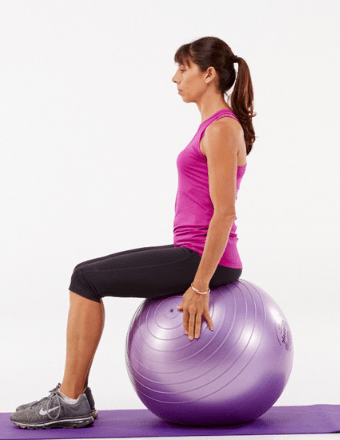Can pregnant women lay on their stomachs
Sleeping on the stomach while pregnant: Is it safe?
Many people have a favorite position for going to sleep. However, if a person’s most comfortable position is tummy down, they might wonder whether that is safe during pregnancy.
When pregnant, many people have trouble getting or staying comfortable while sleeping.
People may worry that their sleeping position will affect their baby.
In this article, we will examine whether sleeping on the stomach while pregnant is safe. We will also look at the best sleeping positions during pregnancy and the ones to avoid.
There is no evidence to suggest that sleeping on the stomach during the early weeks of pregnancy causes harm. The uterine walls and amniotic fluid cushion and protect the fetus.
However, most people find it increasingly challenging to sleep on their stomach as their abdomen grows and raises the torso, altering the natural curvature of the spine.
Sleeping on the stomach may also cause neck and shoulder problems, such as pain, stiffness, and soreness. Some people experiencelower back pain and pelvic girdle pain during pregnancy, which make it more difficult to sleep.
Researchers have observed links between a reduction in sleep quality and several outcomes during pregnancy, such as:
- preeclampsia
- high blood pressure
- gestational diabetes
- premature birth
- unplanned cesarean delivery
A person who prefers sleeping on their stomach may consider using a stomach sleeping pillow with an area cut out for the belly.
Doctors usually recommend people sleep on their side during pregnancy. A 2019 review suggests that sleeping on either side while pregnant is safe.
Left side
Many consider sleeping on the left side the “ideal” sleeping position during pregnancy. This is mostly due to blood flow.
A large vein, known as the inferior vena cava (IVC), runs parallel to the spine on the right side. The IVC carries deoxygenated blood from the lower body and back to the right side of the heart for oxygenation.
As the IVC is to the right of the spine, lying on the left side may allow optimal blood flow to the heart and blood, and nutrients to reach the fetus.
Right side
Earlier research investigating people sleeping on their right side during pregnancy found non-left sided sleeping linked with a higher chance of stillbirth.
In theory, sleeping on the right side, particularly in the latter stages of pregnancy, may compress the IVC, reducing blood returning to the heart and decreasing placental blood flow.
However, recent research indicates that people who sleep on their right side while pregnant are no more likely to experience late stillbirth than people who sleep on their left side. Going to sleep on either side appears to be equally safe.
The National Institutes of Health (NIH) funded an analysis in 2019 to examine sleeping position and adverse outcomes during pregnancy.
They found no connection between going to sleep on the back or right side until the 30th week of pregnancy and complications linked to a decrease in placental blood flow, such as:
- an increased chance of stillbirth
- reduced size of a newborn
- high blood pressure pregnancy disorders, such as preeclampsia, eclampsia, and gestational hypertension
These findings suggest that the sleeping position in early to mid-pregnancy may not increase the chances of complications.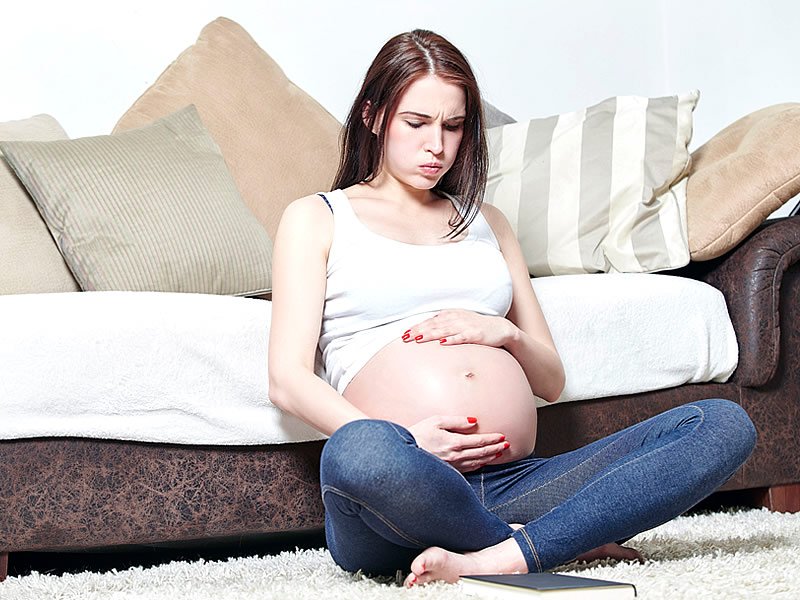 However, the study did not observe the last 2 months of pregnancy.
However, the study did not observe the last 2 months of pregnancy.
Other research found sleeping on the right or left side throughout pregnancy to be equally safe.
Back sleeping
Sleeping on the back during the third trimester may increase the chances of stillbirth in a small number of people.
This is because the weight of the uterus could compress the IVC and aorta. The aorta is the large artery that carries oxygenated blood from the left side of the heart to other parts of the body. This compression could reduce blood flow to the fetus.
Research indicates that back sleeping from 28 weeks of pregnancy may increase stillbirth risk by 2.6 times compared with side sleeping. Side sleeping during the third trimester could reduce late stillbirth by almost 6%.
People who sleep on their backs during pregnancy may experience symptoms, including:
- difficulty breathing
- problems with circulation
- digestive issues
- backache
- low blood pressure
- hemorrhoids
These symptoms may result in:
- stillbirth
- preeclampsia
- low fetal birth weight
- reduced fetal growth rate
People should not worry if they wake up on their back in the late stages of pregnancy, but they should roll onto their side to go back to sleep.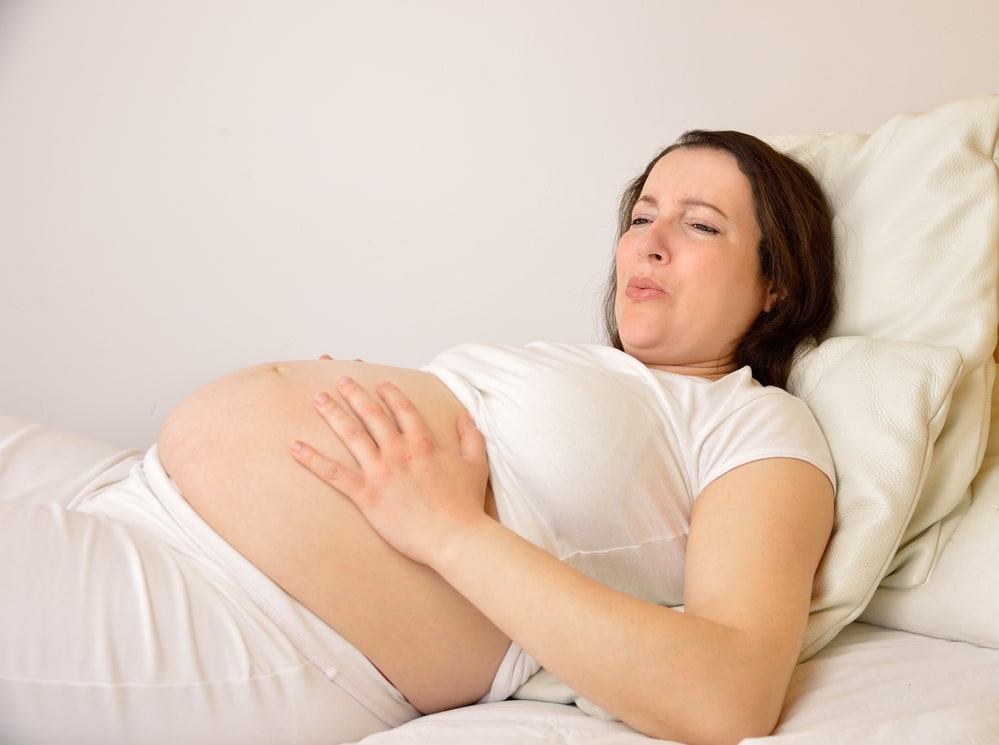
People who find it uncomfortable to sleep on their side can try placing a firm, supportive pillow under the abdomen to reduce lower back stress.
Placing a firm pillow behind the back and legs can also make it more difficult to flip over during the night onto the back.
People who find it difficult to sleep propped up could try placing pillows behind their upper back to find a comfortable angle.
People experience a wide range of symptoms and bodily and hormonal changes during pregnancy that may interfere with sleep, such as:
- insomnia
- gastroesophageal reflux disease
- sleep apnea
- restless legs syndrome
- an increase in nighttime urination
- back pain
- shortness of breath
- increased abdomen size
People can try a range of techniques to relieve their symptoms and improve sleep, including:
- going to bed and getting up at the same time each day
- aiming for 7–8 hours of sleep each night
- drinking enough water
- avoiding caffeine late in the day
- avoiding long naps during the day
- exercising regularly
- trying gentle activities, such as yoga, swimming, or tai chi
- eating a healthful, balanced diet
- taking antacid medications to reduce acid reflux
- avoiding spicy, fried, acidic, and fatty foods
- eating smaller, more frequent meals
- avoiding drinking too much water and other fluids before bed
- trying iron and folate supplements for restless legs syndrome
- eating a few plain saltine crackers before bed to reduce nighttime nausea
- speaking with a doctor about sleep apnea or using a continuous positive airway pressure machine
- using relaxation techniques, such as visualization, breathing exercises, or meditation
Pregnancy pillows
During pregnancy, a person sleeping on their side should keep their knees bent at a comfortable angle and place a thin, soft pillow between their knees to reduce lower back stress. A pregnancy pillow shaped like a crescent can offer support to the arms and knees alike.
A pregnancy pillow shaped like a crescent can offer support to the arms and knees alike.
People with heartburn can also try putting a pillow under their upper body to raise it slightly to reduce the risk of reflux.
During late pregnancy, people experiencing shortness of breath may also benefit from lying on their side or having pillows propping up their upper body.
Elevating the legs slightly with a pillow may also help individuals with leg swelling or pain.
It is generally safe for people to sleep on their stomach during pregnancy, although it may be uncomfortable and cause back or neck pain.
Research suggests that it is safe for people to sleep in whichever position they prefer until around 30 weeks of gestation. However, in the latter stages of pregnancy, people should try to sleep on their side — ideally, their left side for optimal blood flow to the fetus.
People should avoid sleeping on their back from 28 weeks of pregnancy to prevent adverse symptoms and outcomes.
Is it safe to lay on your stomach during pregnancy?
Is it safe to lay on your stomach during pregnancy? | Bounty Parents Email Address: Password:Show password
Remember MeForgot password?
Not a member? Join Now!
First Name: Last Name: Email Address: Password:Show password
Are you pregnant?
Yes No
Due Date:By clicking Join Now, you agree to receive Marketing communication and to our Terms of Use, and Privacy Policy
Conditions apply, see https://www.bountyparents.com.au/for-you-bugaboo-competition/. Commences 01/06/2022. Ends 11:59 AEST/AEDST on 31/05/23. AU residents 18+. Drawn at Are Media, Level 3, 54 Park St, Sydney, NSW, 2000 at 11:00am AEST/AEDST, 1 monthly draw (total of 12 draws) between 07/07/22 – 07/06/23, see full terms for draw schedule. Prizes: 1x Bugaboo Bee 6 base with a black chassis and a yellow canopy, valued at up to $1,169 AUD. The Promoter is Are Media Pty Limited (ABN 18 053 273 546) of 54 Park Street, Sydney, NSW 2000. Authorised under permit numbers: NSW: TP/00018, ACT: TP/00721, SA: T22/555.
AU residents 18+. Drawn at Are Media, Level 3, 54 Park St, Sydney, NSW, 2000 at 11:00am AEST/AEDST, 1 monthly draw (total of 12 draws) between 07/07/22 – 07/06/23, see full terms for draw schedule. Prizes: 1x Bugaboo Bee 6 base with a black chassis and a yellow canopy, valued at up to $1,169 AUD. The Promoter is Are Media Pty Limited (ABN 18 053 273 546) of 54 Park Street, Sydney, NSW 2000. Authorised under permit numbers: NSW: TP/00018, ACT: TP/00721, SA: T22/555.
It might be your go-to position, but is it safe?
by Rebel Wylie | 11 March 2020
If you’re a stomach sleeper, pregnancy can bring up a few questions around how long you can keep up your comfy habit before it becomes unsafe for your baby and for you.
The truth is, that no matter what type of sleep position you favoured before pregnancy, the changes happening to your body are going to mean you might need to make some adjustments for comfort and for safety during your sleeping hours.
The increased size of your stomach, back and body pain, heartburn, breath shortness and insomnia are all things that could impact a sweet night’s slumber during pregnancy, but what about the safety of your baby?
Laying on your stomach while sleeping during pregnancy
Laying on your stomach, particularly in the early days of pregnancy is unlikely to do your unborn baby any harm.
Midwife and Philips Avent Ambassador, Liz Wilkes says, “In early pregnancy, until you have a sizeable bump, lying on your stomach is both safe and generally comfortable.”
While it might be safe, as your bump grows it probably won’t remain comfortable. Your body will have ideas about just how long you can maintain that position as your stomach grows. Most pregnant women find that before too long they are simply unable to physically lay on their stomach before the discomfort renders them unable.
“Once you have a bump it is impractical but not dangerous,” says Liz. “Some women will use various bolsters to lie on their stomach and this is perfectly safe. ”
”
What is often surprising for pregnant women to learn is that sleeping on your back is actually less safe for you and your unborn child.
Midwife and Philips Avent Ambassador, Liz Wilkes says lying on your stomach is generally safe. Image: Supplied
Laying on your back while pregnant
While it might seem the most practically convenient, back sleeping has the potential to cause a lot of problems in your pregnancy.
“The position that is most problematic and potentially unsafe is lying on your back from around 20 weeks (average) as the weight of the baby and uterus can at this stage compress your aorta and decrease blood supply to your baby, ” explains Liz.
“Lying directly flat on your back whilst not something that will cause a stillbirth is linked with a decrease in blood supply. Using pillows around you to assist you to remain on your sides and to be as comfortable as possible is the best practice.”
Back sleeping during pregnancy can also lead to problems with your respiratory and digestive systems, backaches and even haemorrhoids..jpeg)
Continues after video …
The best sleep positions for pregnancy
The recommended sleep position for pregnancy is sleeping on your side (SOS).
Most mums-to-be find SOS the most comfortable, but it is also the safest position.
SOS on the left side in particular, increases the amount of blood and nutrients that reach your baby via the placenta.
“Women recently appear to be being told to ONLY sleep on the left to decrease the rate of stillbirth but this has not been proven in research to be a factor,” says Liz.
“The position of the baby is also impacted by the way that you sleep and therefore there is a recommendation that you try to sleep on your left side to both reduce the risk to the baby of a decreased blood supply and to also get baby into a good position for birth.”
Investing in some extra pillows, including body length pillows, will also help you to get a good night’s rest.
Typically SOS sleeping is when you lay on your side, knees bent with pillow between your legs, which is surprisingly more comfortable than it sounds.
Additional pillows can also be used to help with some common pregnancy ailments. For a sore back add one under your abdomen, and for heartburn you can prop your upper body up with extra pillows until you are in a comfortable position.
The recommended sleep position for pregnancy is sleeping on your side (SOS). Image: Getty Images
Laying on your stomach during exercise while pregnant
During the early days of your pregnancy, performing simple, gentle exercises while laying on your stomach is considered to be safe. While your uterus is still small, your pubic bone will act as a shield, and your tiny baby will be safe in the ever increasing protective fluid.
As your pregnancy moves along and your abdomen expands, laying on your stomach will likely become too uncomfortable to do for long enough to cause any damage to your baby anyway. Adapting the way you exercise by moving to your knees or using an exercise ball for balance and position is the best way to maintain your exercise routine throughout the later stages of your pregnancy.
Laying on your stomach is unlikely to cause injury to your baby, especially in the first trimester, however it is always better to be safe than sorry. Always discuss any plans you have to perform any kind of potentially risky exercises with your doctor or midwife.
Read This Next
RELATED TAGS: Motherhood, Pregnancy, Pregnancy Week 14, Pregnancy Week 32, Sleep, Sleep deprivation
Rebel Wylie
More From Bounty
Is it possible to sleep on your stomach during pregnancy
Subscribe to our Instagram! Useful information about pregnancy and childbirth from leading obstetricians and gynecologists in Moscow and foreign experts: https://www.instagram.com/roddompravda/
Tips and opinions from leading child professionals: https://www.instagram.com/emc.child/
Many girls like to sleep on their stomachs, moreover, many of them can fall asleep only in this position. When planning a future pregnancy, many people have reasonable questions about whether it is possible for pregnant women to sleep in this position and for how long can this be done? Obstetrician-gynecologist EMC Olga Panfilova answers these and other questions.
When planning a future pregnancy, many people have reasonable questions about whether it is possible for pregnant women to sleep in this position and for how long can this be done? Obstetrician-gynecologist EMC Olga Panfilova answers these and other questions.
Can I sleep on my stomach in the first trimester?
Of course, for good health and mood, a calm and complete rest at night is very important. This is especially true for a woman who is expecting a baby, because it is she who often has problems with sleep, not least related to the positions that she usually takes in a dream. Including the posture on the stomach. However, in the early stages of pregnancy, you can safely continue to do this. The uterus is still so small and, moreover, so well protected by the bones of the pubis, that this position of the body is not capable of causing any harm to the developing baby. If the usual posture began to cause you discomfort, then most likely this is due to the so-called inflection of the uterus, which occurs due to the fact that the tissues of this organ soften, especially in the isthmus zone. Another cause of inconvenience may be the mammary glands, which begin to gradually increase in size, become painful. If you're having similar problems, it's time to find more comfortable sleeping positions, such as trying to fall asleep lying on your back. And even better already in the early stages to accustom yourself to sleep on your side. You will definitely appreciate the benefits of the newly acquired habit later, when your stomach has reached such a size that even the very thought of trying to sleep on it seems ridiculous.
Another cause of inconvenience may be the mammary glands, which begin to gradually increase in size, become painful. If you're having similar problems, it's time to find more comfortable sleeping positions, such as trying to fall asleep lying on your back. And even better already in the early stages to accustom yourself to sleep on your side. You will definitely appreciate the benefits of the newly acquired habit later, when your stomach has reached such a size that even the very thought of trying to sleep on it seems ridiculous.
Can I sleep on my stomach in the second trimester?
In the second trimester of pregnancy, the expectant mother can already boast of a voluminous belly, which means that the baby inside has grown up. And even though it is reliably protected by the fetal membranes, amniotic fluid, the muscles of the uterus and the press, laying on the stomach, you still put pressure on the baby. And just imagining that you are lying on your child, you are unlikely to be able to sleep peacefully. At this stage of pregnancy, you can still sleep on your back, but it is best to lie on your side, so you arrange your stomach as comfortably as possible.
At this stage of pregnancy, you can still sleep on your back, but it is best to lie on your side, so you arrange your stomach as comfortably as possible.
Can I sleep on my stomach in the third trimester?
In the third trimester of pregnancy, sleeping on the back of the expectant mother is no longer recommended. The growing uterus puts extra pressure on the blood vessels behind the abdomen. When you lie on your back, this pressure interferes with the normal circulation of blood that should flow to your baby from the lower part of your body. You yourself can feel how uncomfortable this position is by noticing that it becomes difficult for you to breathe when you lie on your back.
The only acceptable sleeping position at this stage of pregnancy is the side position. To improve blood circulation, it is better to raise your legs a little: when you lie on your side, place a pillow under your upper leg. To facilitate the work of the kidneys and improve the outflow of bile, it is optimal to sleep on the left side. But if you are worried about discomfort in the region of the heart, it is better to roll over to the right. Many women claim that special pillows for pregnant women bring great relief, providing the most comfortable position for the whole body during sleep.
But if you are worried about discomfort in the region of the heart, it is better to roll over to the right. Many women claim that special pillows for pregnant women bring great relief, providing the most comfortable position for the whole body during sleep.
Detailed answers to the most burning questions during pregnancy you can get within the framework of the School of Moms EMC
How to sleep during pregnancy
It is difficult to overestimate the role of sleep in the life of every person. A complete healthy rest allows you to fully restore the functioning of the nervous system, relieve stress, improve performance and increase activity. Chronic sleep deprivation is the cause of many diseases. What can we say about a woman who is at the stage of bearing a baby. During this period, more than ever, she needs a healthy, long and full sleep. However, unfortunately, it is during this period that one can only dream of a restful sleep.
As soon as a woman finds out about her new situation, she has to give up a lot for the sake of the health of her unborn baby.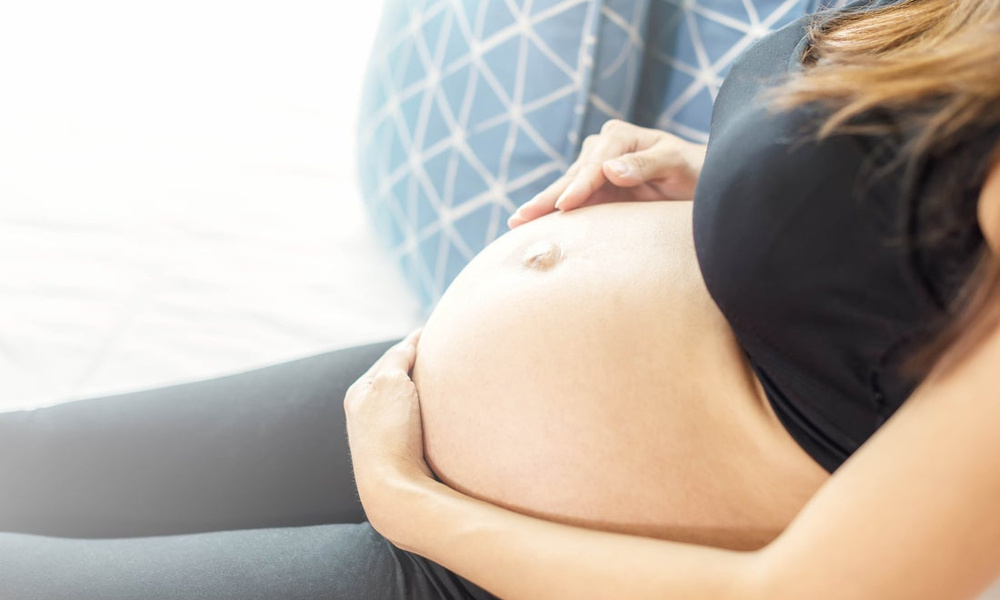 And you need to give up not only bad habits: alcohol, cigarettes, coffee, but also from a comfortable sleep.
And you need to give up not only bad habits: alcohol, cigarettes, coffee, but also from a comfortable sleep.
The cause of insomnia can be :
- Anxiety;
- Frequent urination;
- Fears and phobias before a new stage of one's life;
- Nervousness and irritability;
- Digestive disorder;
- Toxicosis;
- Physical indisposition;
- Uncomfortable posture.
During the period of bearing a child, the female body experiences an extraordinary load, especially in the last trimester. The need for more sleep increases, because the body expends much more energy. Therefore, healthy sleep and pregnancy are inextricably linked.
As soon as a woman finds out about her new position, she has to give up a lot for the sake of the health of her unborn baby. And you need to give up not only bad habits: alcohol, cigarettes, coffee, but also from a comfortable sleep.
Let's try to figure out how to sleep during pregnancy, so as not only not to harm the health of your unborn baby, but to sleep well.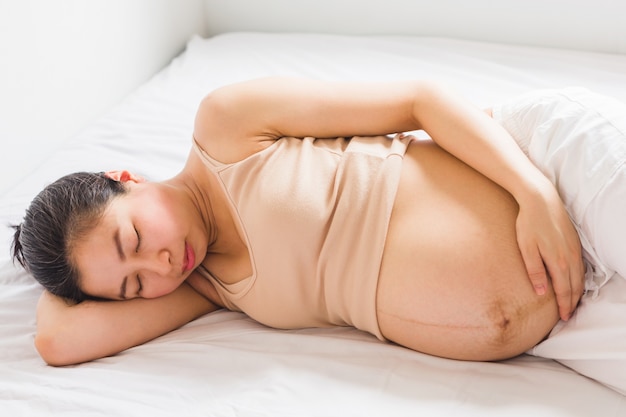
Looking for a comfortable sleeping position
Each person has his own favorite position, in which it is easy to fall asleep and sleep. Many do not imagine a comfortable rest on their backs, accustomed to sleeping on their stomachs. This habit will have to be sacrificed, as it is unsafe for the normal development of the fetus. If in the first three months of pregnancy a woman can still sleep in the position in which she is used to and feels comfortable, then after the first trimester the growing belly will not allow her to lie safely in this position. Despite the natural protection of the baby in the form of amniotic fluid, there is a high probability of injuring the baby in a dream, squeezing it. But what is the right way to sleep during pregnancy?
Back position
Even if you are used to sleeping in a Spartan position, on your back, with your arms spread wide, from the 28th week you will have to radically change your lifestyle. The fact is that as the fetus grows, the load on the intestines and vena cava will increase significantly, blocking the access of oxygen to the baby.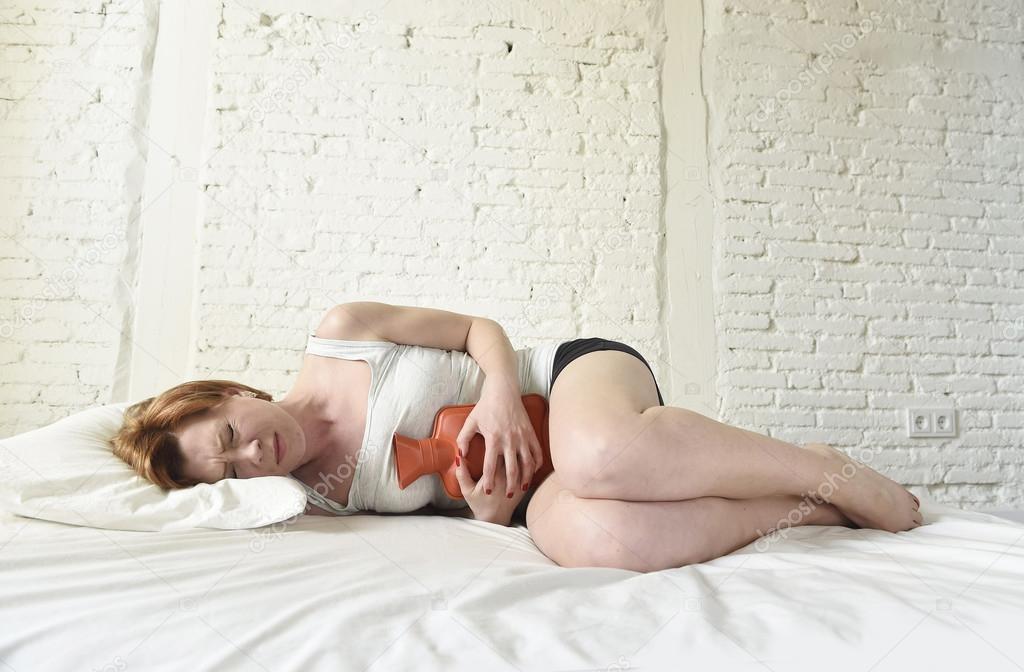
As soon as a woman finds out about her new position, she has to give up a lot for the sake of the health of her unborn baby. And you need to give up not only bad habits: alcohol, cigarettes, coffee, but also from a comfortable sleep.
If you sleep on your back during pregnancy, you may experience the following problems:
- Dizziness;
- Nausea;
- Convulsions;
- Numb limbs;
- Pressure reduction;
- Hemorrhoids;
- Heaviness of breathing.
If you feel these symptoms or the baby gives persistent signals, you need to urgently change your position, so squeezing the vena cava is fraught not only with poor health for the mother, but also with a lack of oxygen supply to the fetus.
Stomach position
One of the most beloved positions for many people, which allows you to quickly fall asleep while hugging a pillow. Many women, as soon as they find out about the change in their lives, are interested in the question, is it possible to sleep on your stomach during pregnancy? Doctors recommend abandoning this position already in the first weeks, even before the enlarged belly makes it impossible to fall asleep peacefully.
If you are afraid during sleep, without controlling your movements, to arbitrarily roll over on your stomach, you can put a large pillow that does not allow you to change position.
Side position
In order to normalize your sleep and not harm the health of the baby, experts recommend sleeping on your side during pregnancy. And if at first this option seems unacceptable to many, after the second trimester, lying on your side is the only possible one. But here the question arises, on which side to sleep in order to ensure the safety of the fetus?
Sleeping on the right side can cause squeezing of the kidney, which can have dire consequences. The ideal posture is lying on the left side. Thus, you not only do not injure the unborn baby, but also improve blood flow along with oxygen to the placenta.
But one should not ignore the individual characteristics of each organism and the position of the fetus in the uterus. When the baby is in a transverse position, choose the side where the baby's head is. And with a breech presentation, doctors recommend changing the position several times a night.
And with a breech presentation, doctors recommend changing the position several times a night.
If you still cannot improve your sleep, you feel unwell and you are tormented by insomnia, then it is better to consult a specialist. A good gynecologist will analyze the situation and help solve the problem. If necessary, he will prescribe a safe sedative that stabilizes the emotional state and helps to fall asleep calmly, resting and restoring the nervous system in a dream.
Help pillow
Fortunately, now modern manufacturers help women survive the pregnancy period with great comfort by offering special pillows. They are made taking into account the physiological characteristics of a woman in this period and allow you to find a comfortable position for relaxation.
You can buy two pillows and put one under your stomach and the other under your knees, looking for your best option. And you can buy a long banana-shaped pillow, which allows you to throw your leg on it while sleeping, which improves well-being and relieves the main load from the lower back and abdomen.






